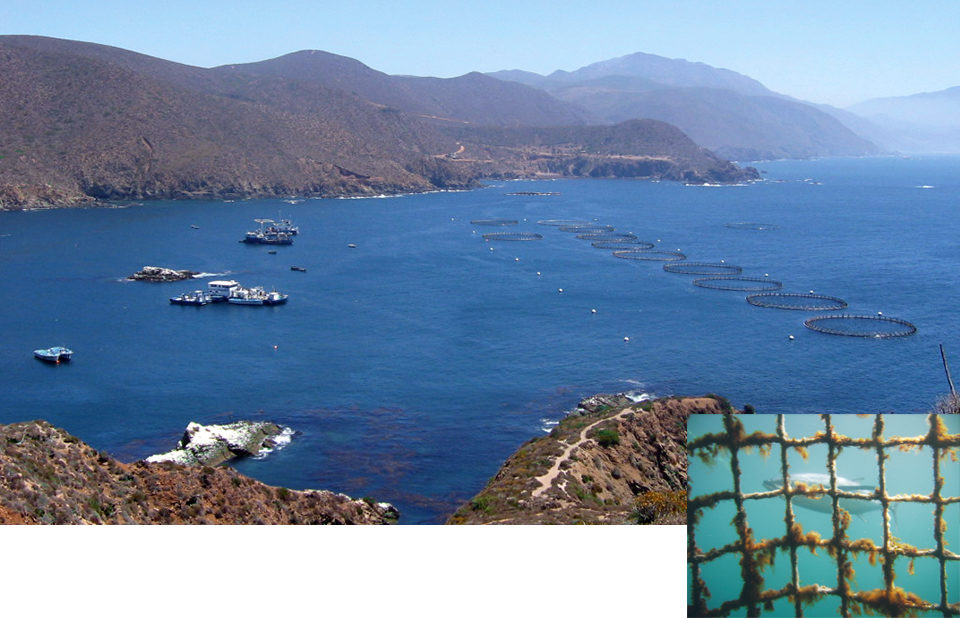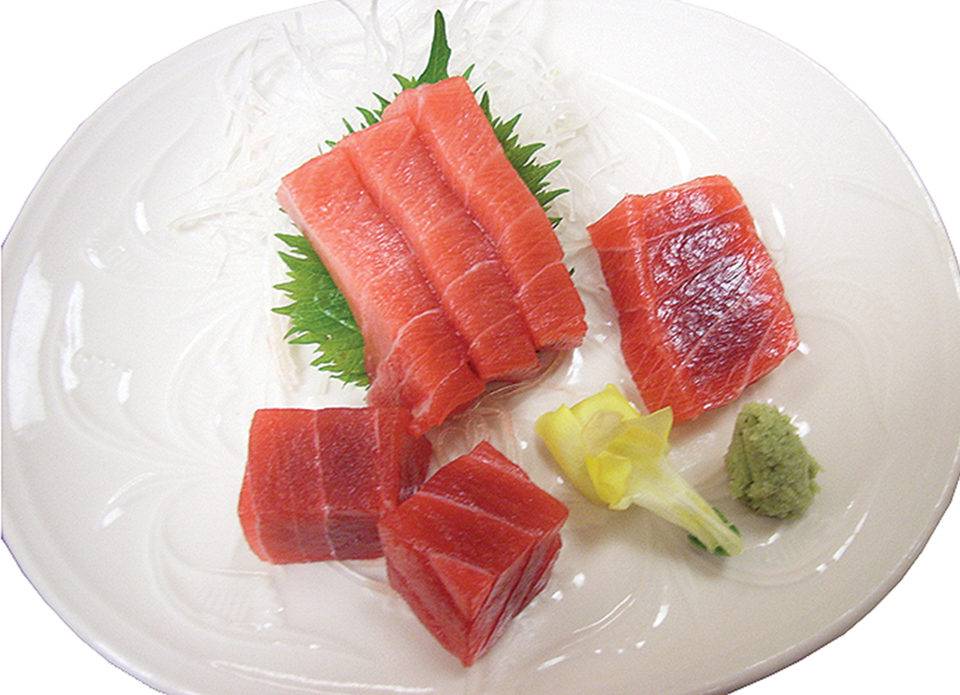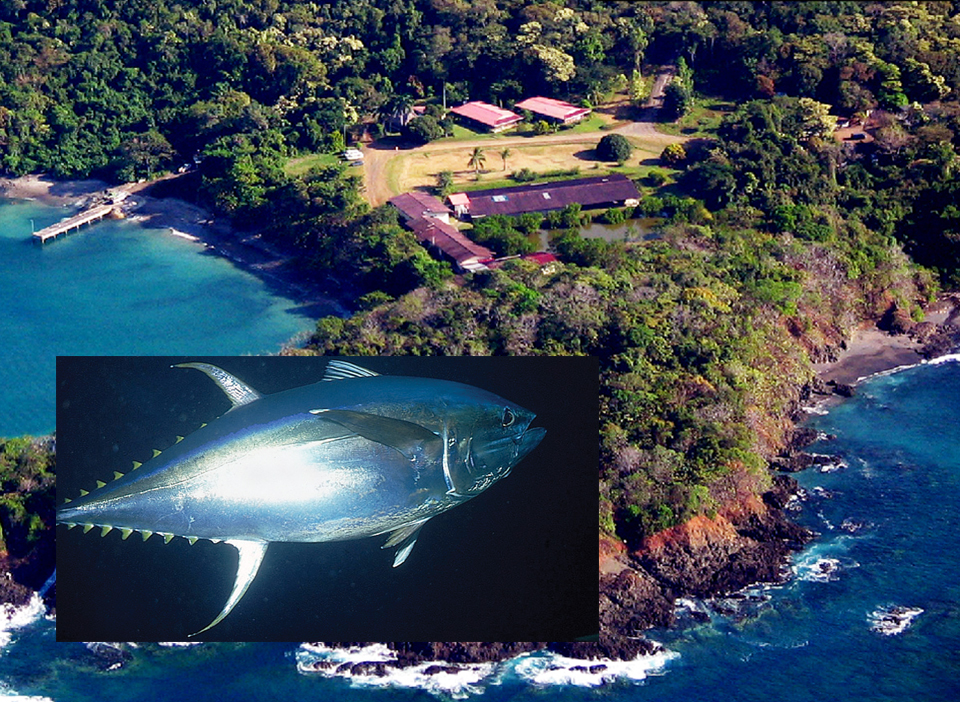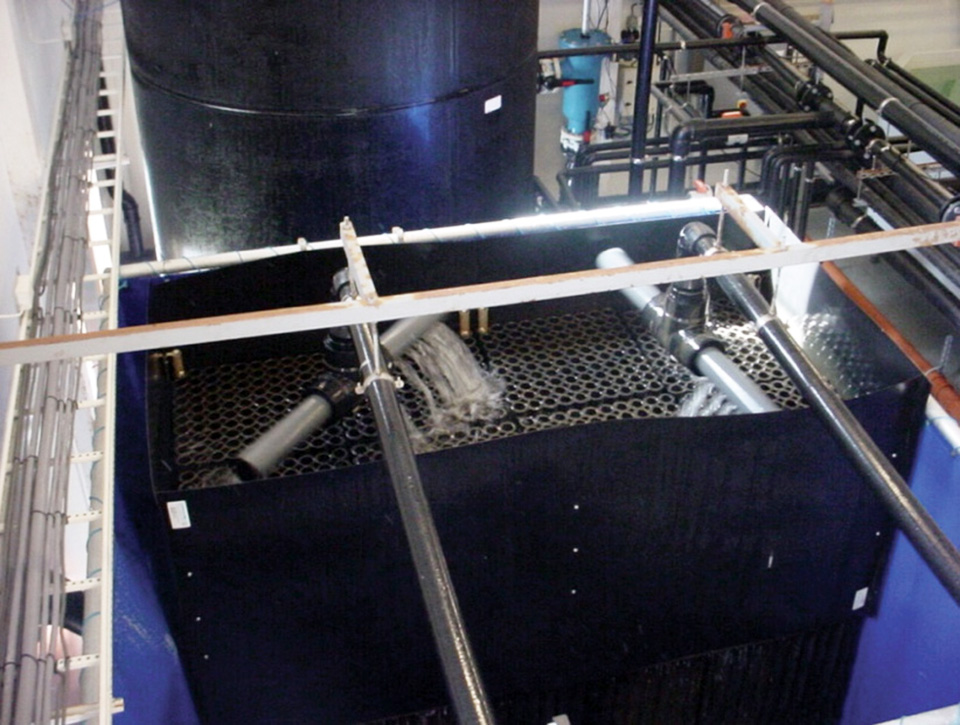Ranchers work together to promote industry, solve problems

The Mexican tuna fleet catches mainly yellowfin tuna and, to a lesser extent, skipjack tuna in the warm waters of the eastern Pacific Ocean. These catches are primarily for canning. Ensenada used to be the main tuna fishery port in Mexico, and almost all of its production was exported to the United States.
A few years ago, the fleet moved to the southern ports of Mazatlan and Manzanillo, located closer to the fishing grounds and the major national markets, mainly Mexico City, Guadalajara and Monterrey. This fleet relocation negatively impacted the port of Ensenada, but bluefin tuna farming has been established nearby as a lucrative added-value activity off the coast of Baja California. Wild tuna are caught and stocked into floating pens, where they are fed until they gain enough weight and fat to meet market demands.
Industry development
In the Ensenada area, tuna ranching came at a perfect time. Highly valued bluefin tuna were available in the cold waters of the California current. Entrepreneurs in Ensenada were looking for new options as the sushi and sashimi markets expanded. The tuna-ranching experience of Australia and the Mediterranean had established effective management practices.
Adding to this, Ensenada has the largest scientific population per capita in Mexico, with many of the scientists dedicated to marine sciences. Ensenada also has an important history regarding aquaculture and fisheries, so there are enough well-trained technical human resources, knowledge and receptiveness towards these activities.
Ranching process
There are three species of bluefin tuna in the world. The one found in the northern Pacific (Thunnus orientalis) spawns in the western Pacific near Japan. Some fish migrate to the eastern Pacific and stay there for two or more years before returning to the western Pacific. During this migration, they are caught off Mexico for the tuna ranches.
Bluefin tuna are caught live with purse seines, which are followed by smaller boats with transporting pens. Although the seine boats are the same that target yellowfin and skipjack tunas, their nets are modified for bluefin tuna.

The process of transporting tuna to ranching sites can take days or weeks, since the animals can be caught far away and the transporting boats navigate slowly to avoid high mortalities. At the ranching sites, the animals are guided into the fattening pens.
The animals are kept in the pens for four to nine months. The pens are constantly monitored to avoid overfeeding, remove material tangled in the nets and remove dead organisms. Also, samples are taken constantly to track the fattening process while keeping an eye on international prices to maximize profits.
The main feed used by the bluefin tuna ranches of Baja California is locally caught sardines fished by the sardine fleet and sold fresh directly to the ranches or landed and frozen for future use. The sardine boats get better prices for their product when it is sold to the ranches than for canning or fishmeal uses. Even before the production of tuna ranches reached its current levels, the fishmeal industry and canneries were declining in Ensenada, and there is no longer any significant canning or fishmeal production in the port.
When animals have just the right amount of fat, and prices are optimal, the fish are sacrificed in a process that is very quick to ensure product quality. Gills and guts are removed, leaving the head and the rest of the body intact, with no scratches, which is necessary to fetch premium market prices. Most harvested animals are exported to Japan, although a small amount is marketed locally and/or regionally.
Cooperation
Currently there are 11 ranches authorized to operate in Baja California. As part of the maturation of this activity, some companies are going through fusions, some are going out of business, while others are expanding.
Not all companies have their own seiners or transport boats, sardine boats to guarantee fresh feed or processing plants. Since no more fishing permits for tuna and sardines are issued, tuna ranchers have had to establish strategic partnerships with local, regional and/or national companies to run their businesses. The bluefin tuna ranches work together to solve common problems, and promote research and better regulatory schemes.
Production
Annual bluefin tuna production from Baja California’s ranches has been around 4,000 to 5,000 metric tons (MT), generating an average of U.S. $80 million-90 million at $15 to 20/kg. From the beginning in the late 1990s, the Mexican tuna ranches have supplied nearly 30 percent of the sashimi-grade bluefin tuna in the Japanese market. The economic impact of this activity in Ensenada has been positive, generating around 1,500 direct and 2,500 indirect jobs, with an impact on 16,000 people.
Environmental issues addressed
As with any other human activity, tuna ranching has environmental impacts. Unconsumed sardines and fish feces are the main wastes. However, changes in the benthic community are minimized by proper site selection and management practices.
Tuna ranching is a seasonal activity that gives time to the system to recover during the off-season. Several management procedures such as pen rotation and feeding surveillance reduce pollution. Ranching sites have strong water currents to maintain good oxygen levels for the bluefin tuna.
To date, no major impacts have been detected on the sea bed underneath or in the water column surrounding the pens. At Ensenada, tuna ranching does not carry any risk of species introduction, since tunas and sardines are locally available. Net fencing around the pens successfully avoids interaction with marine mammals.
(Editor’s Note: This article was originally published in the July/August 2008 print edition of the Global Aquaculture Advocate.)
Now that you've reached the end of the article ...
… please consider supporting GSA’s mission to advance responsible seafood practices through education, advocacy and third-party assurances. The Advocate aims to document the evolution of responsible seafood practices and share the expansive knowledge of our vast network of contributors.
By becoming a Global Seafood Alliance member, you’re ensuring that all of the pre-competitive work we do through member benefits, resources and events can continue. Individual membership costs just $50 a year.
Not a GSA member? Join us.
Authors
-
Dr. Juan Guillermo Vaca-Rodríguez
Universidad Autónoma de Baja California
Facultad de Ciencias Marinas
Apdo. Postal 453
22800 Ensenada, Baja California, México -
José A. Zertuche-González
Universidad Autónoma de Baja California
Facultad de Ciencias Marinas
Apdo. Postal 453
22800 Ensenada, Baja California, México -
Raúl del Moral Simanek
Consejo Nacional de Ciencia y Tecnología
Ensenada, Baja California, México -
Dr. Oscar Sosa-Nishizaki
Centro de Investigación Científica y de Educación Superior de Ensenada
Departamento de Oceanografía Biológica
Ensenada, Baja California, México -
Barry A. Costa-Pierce, Ph.D.
Rhode Island Sea Grant
University of Rhode Island
Graduate School of Oceanography
Narragansett, Rhode island, USA -
Charles Yarish, Ph.D.
University of Connecticut
Stamford, Connecticut, USA
Tagged With
Related Posts

Health & Welfare
Achotines laboratory home to continuing studies of tuna early life history
The Inter-American Tropical Tuna Commission Achotines Laboratory in southern Panama is the world’s only facility with nearly year-round availability of tuna eggs and larvae. A study is comparing the reproductive biology, genetics and early life history of yellowfin and Pacific bluefin tuna.

Responsibility
A look at integrated multi-trophic aquaculture
In integrated multi-trophic aquaculture, farmers combine the cultivation of fed species such as finfish or shrimp with extractive seaweeds, aquatic plants and shellfish and other invertebrates that recapture organic and inorganic particulate nutrients for their growth.

Responsibility
A look at various intensive shrimp farming systems in Asia
The impact of diseases led some Asian shrimp farming countries to develop biofloc and recirculation aquaculture system (RAS) production technologies. Treating incoming water for culture operations and wastewater treatment are biosecurity measures for disease prevention and control.

Innovation & Investment
A review of unit processes in RAS systems
Since un-ionized ammonia-nitrogen and nitrite-nitrogen are toxic to most finfish, controlling their concentrations in culture tanks is a primary objective in the design of recirculating aquaculture systems.


